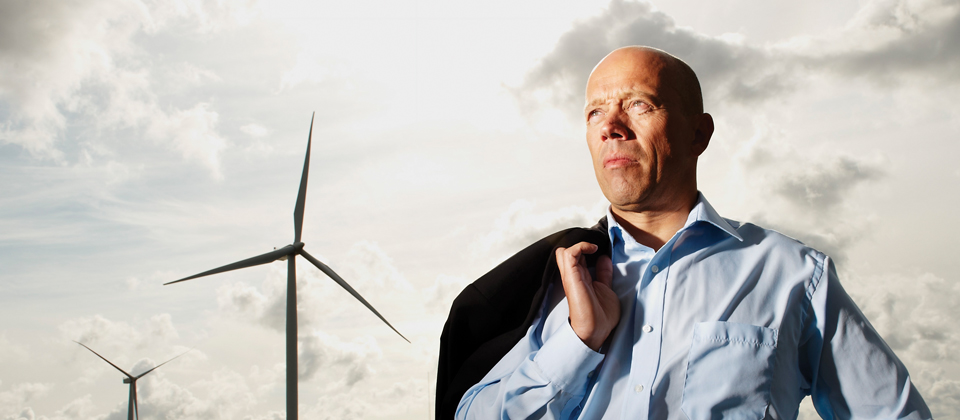
By Jan Hylleberg CEO, The Danish Wind Industry Association (DWIA)
While there’s still much to be done, offshore wind has shown it can step up to its European challenges. Now, however, it’s time to shift up a gear to deliver in a truly global market.
Over the past year or so, the European offshore wind sector has made huge steps forward, demonstrating the ability to deliver on its promise of a lower Levelised Cost of Energy (LCoE). It’s a powerful achievement, particularly given that the value chain has had to cope with the difficult combination of distant investment horizons accompanied by relatively rapid changes in technologies, procedures, distance from shore and, of course, sheer size.
The LCoE achievement has made its mark, for example, in tendering for Horns Rev 3 in Denmark, and in recent projects in the UK market. And it has created an undeniably strong argument that can help to cement offshore wind as a dominant player in the energy mix of the future.
With new offshore capacity installations in Europe during the first half of 2015 up 200% compared with the same period last year, the industry has proven it is in firm control of the technology and that, with the passing of each year, it can develop an even stronger value proposition for all involved.
BROADER PLAYING FIELD
While this progress is both encouraging and reassuring in itself, it’s important that, in a European context, we are able to quickly determine how plans for the future of energy will look after 2020. We need to arrive at a clearer understanding of how to implement Europe’s 2030 energy targets, stimulating the industry to invest, and creating a platform for the kind of lively competition that can maintain its cost-cutting momentum.
Without such clarity, the market cannot instill the confidence required to trigger further industrialisation and economies of scale. With it, the European market landscape can undergo valuable structural changes that will see new players enter the arena, shifting the dominance of countries such as Denmark, the UK and Germany to create a broader playing field that can draw upon the skills and resources of France, Belgium and others. The participation of these new entrants can be expected to pave the way to new levels of innovation and positive disruption.
GOING GLOBAL
From a Northern European perspective, there’s little doubt that companies such as Siemens Wind Power and MHI Vestas Offshore Wind will retain the top two places on the competitive offshore ladder – both within and outside of Europe – at least for the next decade or so. One could expect, however, if the worldwide market continues to strengthen, that a total of three or four turbine manufacturers will split the offshore action in the future. Perhaps more interesting, however, is how the entire European offshore wind supply chain can adapt to meet the challenges of a truly global market.
After 2020, and toward 2025, the Asian market – mainly comprising China, Korea, Japan and Taiwan – and quite possibly the US, will fundamentally change the way the European supply chain needs to approach its work. A paradigm shift will be demanded, and companies will need to learn how to perform in a worldwide stage.
As almost any business that has made the transition from local to global success can report, becoming truly global requires new people, skill sets, locations and much more besides. Success can depend, for example, upon the ability to pick potential winners among the many opportunities that will likely be presented – both in terms of projects and alliances. Already, the industry’s most savvy companies are gearing up for this future, but those whose attention lingers too long on their local markets may find themselves unable to make this crucial transition.
REDUCING THE RISKS
At best, going global is a risky business – yet these risks must be taken. And that’s where industry associations like the Danish Wind Industry Association (DWIA) have a significant role to play. Already, we run a number of activities designed to help our more than 250 member companies to understand and to link up with markets abroad. In early September, for example, we teamed up with Offshoreenergy.dk and the Danish Trade Council to run a workshop on the Taiwan market that was also attended by developers and prime contractors from the region itself. The workshop will be followed up with a trade delegation to Taiwan in November. Moreover, we are one of two owners of the Danish Wind Export Association, bridging the gap for many companies aiming to set up shop or gain orders from markets outside Denmark.
More can and will be done, however, both by associations like our own and other industry supporters, to help companies prepare for the new global reality. But the bar is set high – and for most, it will take quite a leap to make the transition from local to global. I strongly encourage, therefore, all spheres of influence, from policy-makers and investors to educational institutions, to strengthen their support for the industry, helping it to realise the full potential of a powerful new future.
Like this post? Subscribe now and get notified about new content!